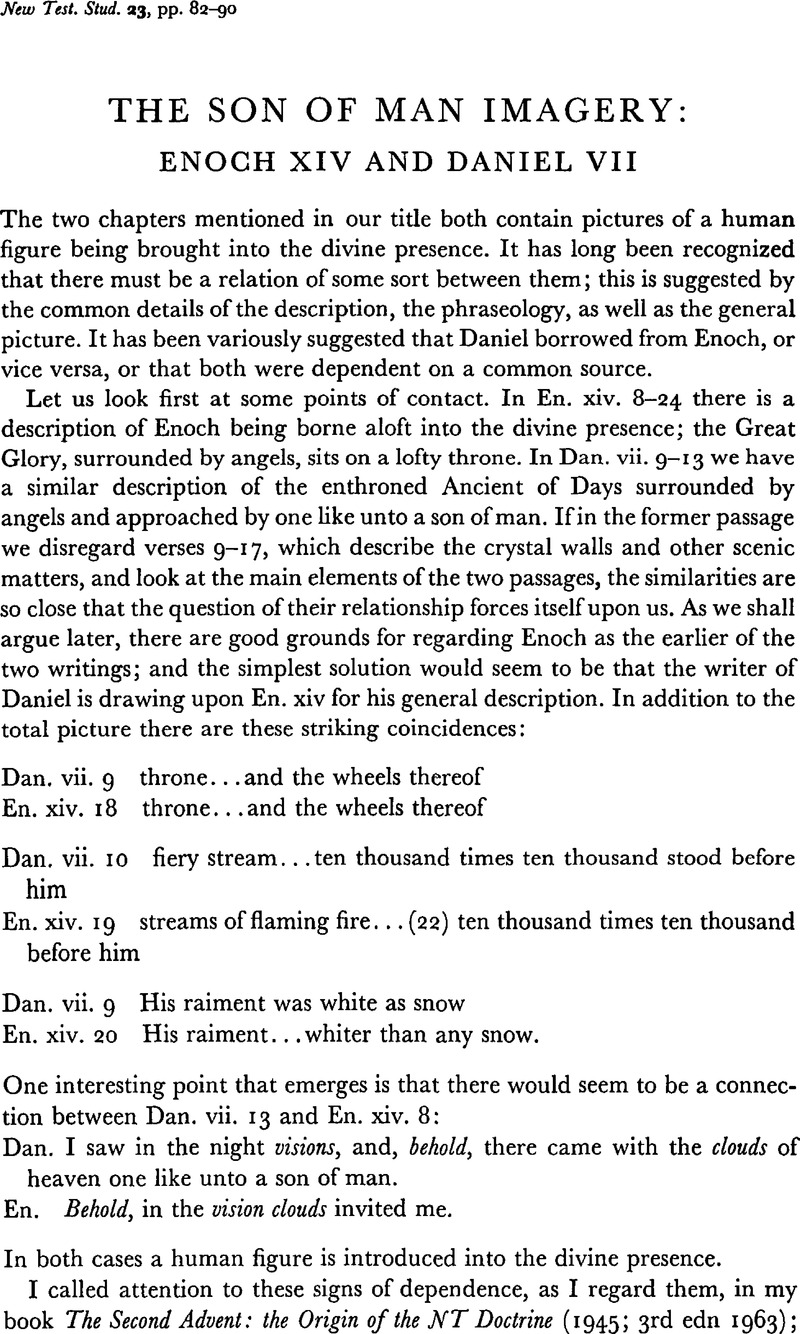No CrossRef data available.
Article contents
The Son of Man Imagery: Enoch xiv and Daniel vii
Published online by Cambridge University Press: 05 February 2009
Abstract

- Type
- Short Studies
- Information
- Copyright
- Copyright © Cambridge University Press 1976
References
page 83 note 1 As Jacob, E. declares, in a book published since the above note was written, ‘it is…not necessary to postulate a foreign origin for this figure’, Theology of the Old Testament (E.T. London, 1958, p. 341).Google Scholar
page 85 note 1 Pp. 93–9 in the 3rd edition (1963Google Scholar) which I follow here; the book first appeared in 1944, 2nd edn 1947.Google Scholar
page 86 note 1 Greek Influence in Jewish Eschatology (London, 1961), chs. 2–4.Google Scholar
page 87 note 1 Incidentally the evidence of the Dead Sea Scrolls, which was not available when I wrote in 1945, has to a certain extent justified the doubts I expressed about a pre-Christian dating for the Similitudes. About a dozen items from Enoch have been found at Qumran, and although all the other four parts are represented not a line of the Similitudes has come to light. This, as far as it goes, would confirm the views of Dalman, V. H. Stanton and others, who placed this section in the Christian era. The bearing of the Qumran MSS on our main problem, the date of the book of the Watchers (En. i-xxxvi), will be considered at a later point – see below.
page 88 note 1 His Appearing and His Kingdom, ch. 1; and ‘“The Second Advent” – 25 Years Later’, Exp. T. LXXXIIGoogle Scholar, 307 ff.
page 89 note 1 It now appears that there is no ground for regarding chs. i-v as a later addition; they should be taken as an integral part of i-xxxvi. In the course of the present article we have referred mainly to vi-xxxvi, as this was the delimitation usually followed. But as Milik has shown, the evidence of the fragments does not support this (p. 345).
page 89 note 2 These dates refer, of course, to the age of these particular copies.


